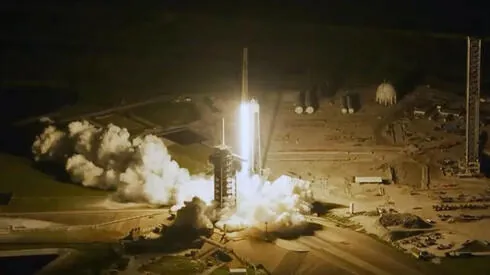
Axiom's Ax-4 Mission: A Leap for Israeli Science and Global Space Collaboration
2025-07-06
Author: Ming
A Groundbreaking Private Mission Takes Flight
On June 25, Axiom Space launched its fourth private mission, Ax-4, marking a vibrant collaboration in space exploration. Just a day later, the Dragon spacecraft, aptly named "Grace," docked with the International Space Station (ISS), welcoming its four extraordinary crew members into the fold of international astronauts already aboard.
Historic Milestones for India and Space Exploration
A notable highlight of this mission was the inclusion of 39-year-old Indian pilot Shubanshu Shukla, making him the second Indian ever to venture into space, following the legacy of Rakesh Sharma, who flew aboard the Soviet Salyut 7 space station in 1984. With Shukla's ascent, India's burgeoning space ambitions are drawing significant public attention.
A Star-Studded Crew Led by Space Pioneer Peggy Whitson
Commanding the Ax-4 mission is none other than Peggy Whitson, a seasoned NASA astronaut with a remarkable total of 675 days spent in space. This mission marks her fifth journey to the ISS and second with Axiom, as the company shifts towards establishing a privately-owned space station to succeed the ISS.
Collaboration Across Nations
Joining Whitson are representatives from various countries, including engineer Sławosz Uznański-Wiśniewski from the European Space Agency—Poland's second astronaut—and Hungarian engineer Tibor Kapu, who follows in the footsteps of Charles Simonyi, a space tourist who flew to the ISS years ago. This global collaboration highlights the expanding footprint of space exploration and science.
Revolutionary Atmospheric Research
A key component of the Ax-4 mission is its research into atmospheric phenomena, particularly lightning sprites. Under the guidance of Professor Yoav Yair from Reichman University, astronauts will attempt to document these fleeting bursts of light that occur above thunderstorms. Hungary is joining forces with Israel on this innovative experiment, further solidifying international scientific partnerships.
Ambitious Goals and Educational Outreach
Professor Yair's team has refined their techniques to increase the chances of capturing these elusive events, with the mission expected to yield fascinating scientific data. This collaboration also extends to educational initiatives in India, where the Rakia Mission is working with Shukla's alma mater to inspire future generations in STEM.
Challenges in Space: Mission Possible and the Parker Solar Probe
This week also witnessed setbacks for The Exploration Company, which lost its experimental spacecraft, Mission Possible, after a promising launch. Aging into ongoing challenges, NASA's Parker Solar Probe completed another record-setting flyby of the Sun, gathering vital data to help enhance our understanding of solar phenomena.
The Vera Rubin Telescope: A Game-Changer in Astronomy
Meanwhile, the U.S.'s Vera Rubin Telescope debuted remarkable imagery, using its immense capabilities to survey the sky at unprecedented scales. This observatory, alongside Israel's upcoming ULTRASAT telescope, aims to unravel cosmic mysteries and bolster planetary defense efforts.
As we stand on the precipice of a new era in space exploration, missions like Ax-4 symbolize the spirit of global collaboration and scientific discovery, paving the way for future innovations in the cosmos.




 Brasil (PT)
Brasil (PT)
 Canada (EN)
Canada (EN)
 Chile (ES)
Chile (ES)
 Česko (CS)
Česko (CS)
 대한민국 (KO)
대한민국 (KO)
 España (ES)
España (ES)
 France (FR)
France (FR)
 Hong Kong (EN)
Hong Kong (EN)
 Italia (IT)
Italia (IT)
 日本 (JA)
日本 (JA)
 Magyarország (HU)
Magyarország (HU)
 Norge (NO)
Norge (NO)
 Polska (PL)
Polska (PL)
 Schweiz (DE)
Schweiz (DE)
 Singapore (EN)
Singapore (EN)
 Sverige (SV)
Sverige (SV)
 Suomi (FI)
Suomi (FI)
 Türkiye (TR)
Türkiye (TR)
 الإمارات العربية المتحدة (AR)
الإمارات العربية المتحدة (AR)